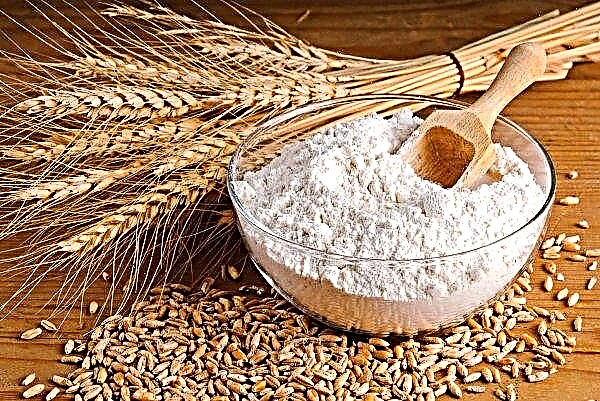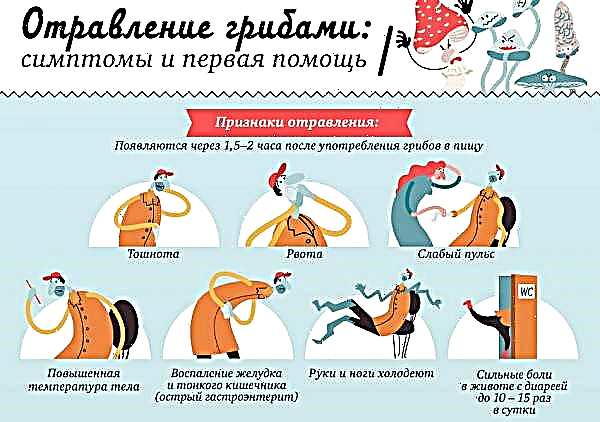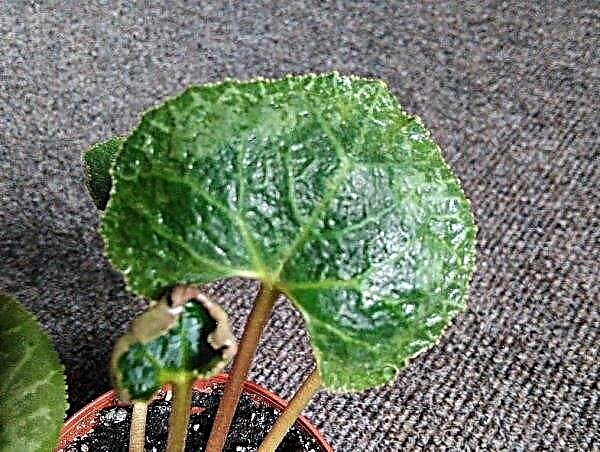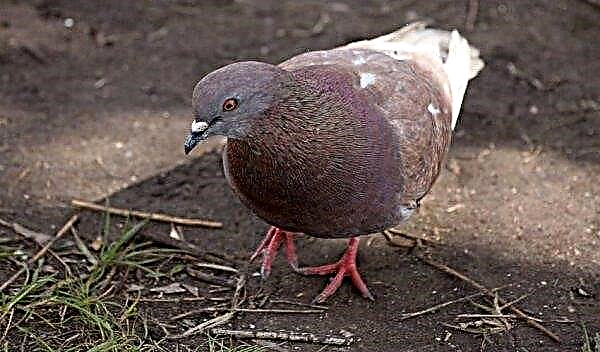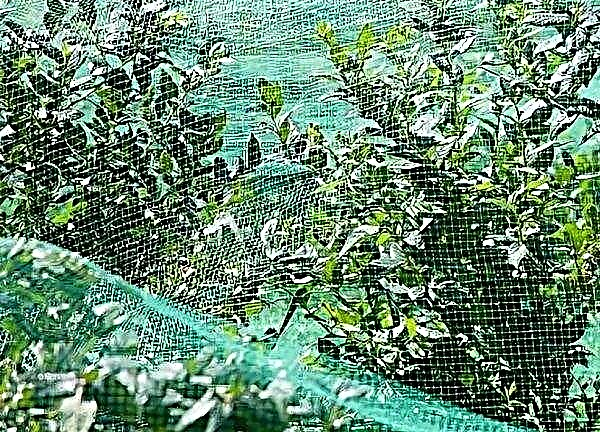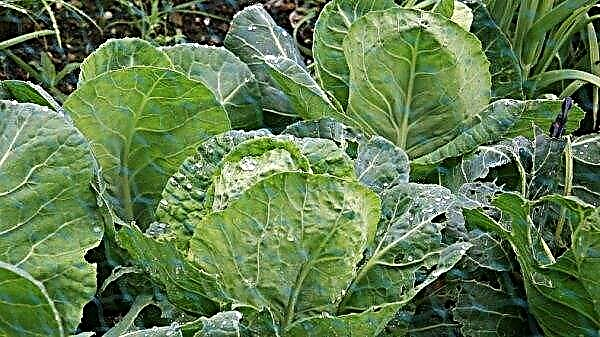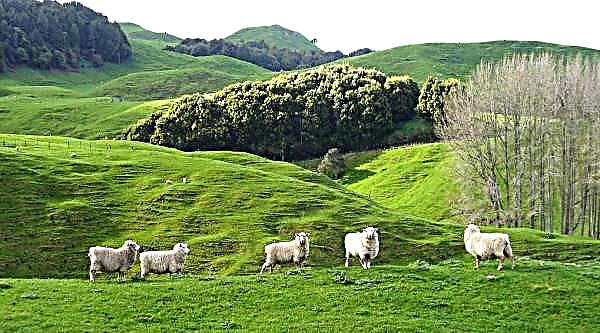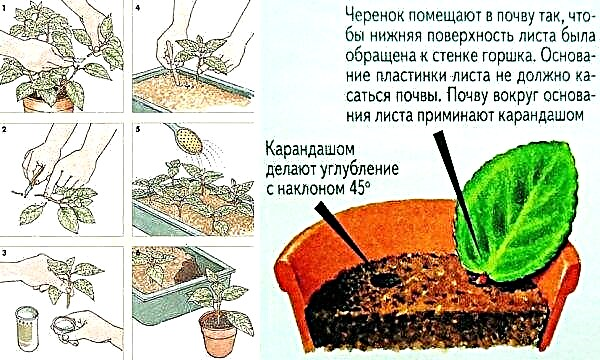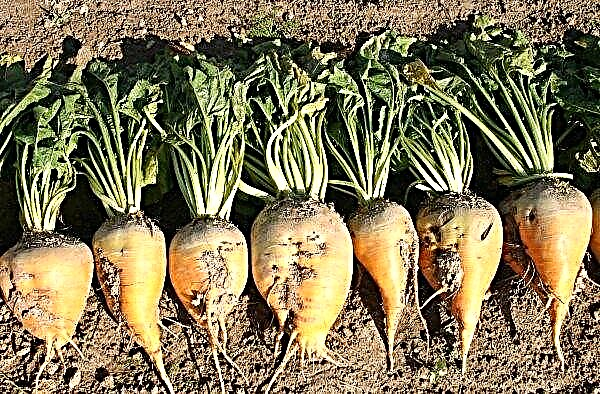It is difficult to count the potato varieties that exist in the world today - there are more than 7 thousand, and new ones appear annually. The article will introduce you to a relatively new, but already quite popular variety of potatoes - Melody.
Grade history
The melody appeared in the Netherlands. This country has long been a leader in the selection of new potato varieties and the production of seed material. The originator of the Melody variety is one of the Dutch breeding companies - C. Meijer. B.V.
This medium-late potato stands out for its beautiful appearance, good taste, high yield and disease resistance.
Did you know? The first to bring potatoes to Russia was Peter I. Catherine II contributed to the further spread of overseas vegetables.
In the state register of vegetable plants of the Russian Federation, Melody was registered in 2009 with a recommendation for cultivation in the Central region. The variety is also included in the registers of Ukraine and Moldova, where it is actively grown.
Botanical Description
Potato is a grassy tuberous plant from the nightshade family. The variety under consideration is classified as medium-late.
Tuber
Root crops aligned, look attractive. The nests are compact and consist of 7–11 tubers.
- oval shape;
- weight - 95–180 g;
- the skin is smooth, yellow, has a mesh pattern;
- eyes are small, superficial;
- the flesh is yellow, quickly boils, does not darken during heat treatment;
- starchiness - 11-17%;
- dry matter - 20.5% (suitable for the industrial manufacture of dry mashed potatoes);
- excellent taste, rating - 5 points;
- universal application, but not suitable for frying chips and deep-fried;
- tolerates transportation well;
- perfectly stored (up to 8 months), keeping quality - 95%.
Kustov
Potato bushes Melody have the following distinguishing features:
- stems semi-erect, intermediate type;
- leaves are large, closed, light green and green, the edges are slightly wavy;
- inflorescences are formed from several red-violet flowers.

Grade characteristics
Due to its excellent commercial qualities, Melody is among the leaders in sales. At the same time, the variety does not lose characteristics for 3 years of planting its own seeds.
But then the indicators fall, because the potato begins to degenerate. In this regard, it is recommended to update the seed material for the 4th – 5th year.
Disease resistance
One of the positive features of the variety is its immunity to many diseases of solanaceous crops.
The melody is not sick:
- mosaic (wrinkled and banded);
- scab;
- cyst-forming golden potato nematode;
- potato cancer according to type I;
- black leg;
- rhizoctonia.
The variety is medium resistant to late blight of tubers and tops. Under inappropriate conditions and with poor care can get this infection.
Precocity and productivity
The melody does not apply to precocious varieties. It is positioned as a medium late and late variety. From planting seeds to the full ripening of tubers, 100-120 days pass. The timing is affected by weather conditions and the region in which the crop is grown. The melody is a productive variety. The annual yield is 176–335 kg / ha, or 18–35 kg / m². The maximum yield exceeded 600 c / ha.
The melody is a productive variety. The annual yield is 176–335 kg / ha, or 18–35 kg / m². The maximum yield exceeded 600 c / ha.
Of all the potatoes harvested, 90% has a presentation. Of these, 95% of tubers will remain for 7–8 months until the summer without loss of taste and marketability.
Did you know? A 15-meter-tall potato tree grows in tropical forests. It has evergreen 10-centimeter leaves, huge fragrant flowers and poisonous black-blue tomato berries, but no edible tubers.
Good qualities and disadvantages of the variety
Potato Melody has many positive qualities, for which he fell in love with farmers and gardeners.
- Benefits:
- excellent presentation;
- great taste;
- suitability for making dry mashed potatoes;
- stable yield;
- transportability and keeping quality;
- long rest period without germination and loss of taste;
- immunity to many potato diseases.
- The disadvantages include:
- unsuitability for deep-frying;
- the need for protective measures against late blight.
Planting potatoes
You need to prepare for planting potatoes in advance. Seed potatoes should be bought from reliable manufacturers. Then, over the next 3 years, you can select your own seed.
Sowing tubers should not be small. For this purpose, immediately after harvesting, the most beautiful smooth root crops, without damage and stains, are selected from the best bushes. Before planting, they need to be germinated, large specimens cut into pieces and treated with fungicides.
Optimal timing
The timing of planting Ringtones varies by region. In the middle lane it is planted in the second half of May, in the southern regions - at the end of April. The onset of early or late spring may shift the planting time by a couple of weeks.
Determine the timing helps temperature and soil moisture. Potatoes need to be planted in warm earth (+ 8 ... + 10 ° C). The fact that the soil has already warmed up enough can be judged by the air temperature.
If at night it does not stably fall below + 10 ° C, then the time is right. In addition, the earth should not be too wet and not dry, but moderately humid.
Seat selection
Like other varieties of potatoes, Melodies need sun, but shade, drafts and high humidity are harmful.
In accordance with this, you need to choose a suitable place:
- sunny, without a shadow;
- closed from drafts by bushes;
- without close occurrence of groundwater.
Important! If groundwater is located close to the surface, it is necessary to make high beds.
The best potato crop can be obtained on fertile soils - chernozem and light loam. But the Melody grows well and bears fruit on clay, sandy and sandy loamy soil.
A huge role is played by crop rotation. You can not plant potatoes after tomatoes and other nightshade, that is, they suffer from the same diseases and can infect each other.
You can plant a Melody in one place for 3 years in a row, but on condition that the bushes did not hurt. The best predecessors are siderates: legumes, winter cereals, flax, perennial and annual grasses, lupins (on sandy ground).
Preparing the soil for planting
The land for potatoes is prepared in 2 stages:
- in the fall - deep plowing or digging with the simultaneous introduction of organic matter (humus or compost), then surface scattering of phosphorus-potassium fertilizers;
- in spring - the introduction of nitrogen fertilizers (ammonium nitrate or ammonium sulfate), followed by loosening of the soil.
 Farmers often practice siderata crops, which replaces all fertilizing. Grasses are sown immediately after harvesting the previous crop, then in the fall they are plowed with the ground. Siderates saturate the soil with nutrients, inhibit weeds, protect against diseases and repel pests.
Farmers often practice siderata crops, which replaces all fertilizing. Grasses are sown immediately after harvesting the previous crop, then in the fall they are plowed with the ground. Siderates saturate the soil with nutrients, inhibit weeds, protect against diseases and repel pests.Important! It is impossible to fertilize the earth with fresh manure. It is a breeding ground for insect larvae, as well as pathogenic bacteria and fungi.
Detailed landing scheme
The best yields are observed when growing no more than 600-700 bushes on 1 hectare of land. This density is achieved when planting according to the scheme 35 × 70 cm. So each bush will have enough space for growth. Each plant is well shined by the sun, is aired and receives the necessary amount of nutrients.
Each plant is well shined by the sun, is aired and receives the necessary amount of nutrients.
The depth of the holes depends on the composition of the soil; on light sandy ground - up to 10 cm, on heavier - 5–7 cm. It is recommended to pour half a glass of wood ash into each hole.
Features of care after planting
Potato seedlings need care. Mandatory care actions include: watering, hilling, weeding, loosening, top dressing and prevention. The melody is no exception.
Watering
Although the potato does not like excessive moisture, it still needs moisture.
The number and frequency of irrigation is directly related to the following factors:
- Weather in the region: in the middle zone with moderate rains, watering is rare or completely absent, and in the southern arid regions - at least 1 time per week or more often 3-4 liters per bush.
- Soil composition: sandy soil quickly absorbs a lot of moisture, and heavier clay soils retain water.
- Vegetation period: during flowering and growth of tops, regular and frequent watering is necessary - 2-3 times a week, 5-6 liters for each plant.
 A clear sign that it is time to water, - the earth has dried to a depth of more than 5 cm. Irrigation water must be defended and heated in the sun, otherwise the roots will begin to rot.
A clear sign that it is time to water, - the earth has dried to a depth of more than 5 cm. Irrigation water must be defended and heated in the sun, otherwise the roots will begin to rot.Top dressing
If the soil was fertilized before and during planting, this nutrition should be enough for the development of root crops. But on very poor soil, you will need to feed the plants during the growing season.
Root dressing contribute 2 times:
- when the seedling height reaches 20–30 cm, they are fertilized together with the earthing up with a solution of bird droppings (1:15) or urea (20 g / 10 l);
- before flowering begins, mineral fertilizers are applied (60 g of superphosphate, 20 g of potassium sulfate and 60 g of ash are dissolved in a bucket of water).
Foliar top dressing is also useful: they nourish plants and protect them from diseases.
They are also introduced in 2 stages:
- during flowering - spraying with an aqueous solution of a mineral mixture (1 tsp. Ammonium nitrate, 1 tsp. Potassium chloride, 1 tbsp. Superphosphate and ¼ h. Copper sulfate dissolved in 10 l of water);
- during the growth of root crops - top dressing with manganese and boron.

Weeding and loosening the soil
The day after watering or rain, it is necessary to loosen the earth in order to destroy the resulting dry earth crust. Due to this, aeration of the soil is resumed and moisture is retained in it, therefore loosening is called “dry irrigation”.
In a moderately humid climate, loosening can replace irrigation.
Important! Experts recommend hilling potato seedlings. Formed earthen mounds protect plants from cooling and form an additional area for root nutrition and tuber formation.
During loosening, it is also important to remove weeds. When weeds multiply, the tubers become smaller, i.e. they lack moisture and nutrition. Without regular weeding, the crop suffers greatly.
Pest and Disease Control
The melody is resistant to many fungal diseases, so all the strength you need to throw in the defense against late blight.
Prevention is the following measures:
- careful selection of seed from healthy bushes;
- seed treatment with fungicides;
- crop rotation compliance;
- soil treatment with Bordeaux fluid (when crop rotation is not possible);
- the destruction of pests that can carry the virus.
At the first signs of the disease, it is necessary to treat the bushes 2 times with an interval of 1–1.5 weeks with special tools: “Ridomil”, “Arcedil”, “Osksykh”, “Syngenta”.
The most dangerous pest is the Colorado potato beetle. Prevention - preplant treatment of seeds with insecticides, for example, "Prestige". To combat the bug use drugs:
To combat the bug use drugs:
- chemical - “Regent”, “Prestige”, “Corado”, “Colorado”;
- biological - “Fitoverm”, “Bicol”, “Bitobaxicillin”.
Harvesting and storage
Harvest Melodies are harvested 3.5 months after planting. Usually this is the end of August or September.
You can determine the readiness of a potato for digging out according to 2 signs:
- The tops died and dried out.
- The skin of the tubers is quite dense and rough (this is checked by digging 1 bush per sample).
If at the appointed time the tops are green, it should be mowed 10 days before harvesting. This will allow root crops to reach the desired maturity. Potatoes should be stored in a dark, ventilated room at a temperature of + 2 ... + 4 ° C and a humidity of 80%. In such conditions, the melody can be stored for 8 months, until the beginning of summer. During this time, the tubers do not germinate, do not deteriorate and do not lose their taste.
Potatoes should be stored in a dark, ventilated room at a temperature of + 2 ... + 4 ° C and a humidity of 80%. In such conditions, the melody can be stored for 8 months, until the beginning of summer. During this time, the tubers do not germinate, do not deteriorate and do not lose their taste.
Variety Melody has well established itself as a productive and tasty potato, which is suitable for both home and industrial cultivation.

